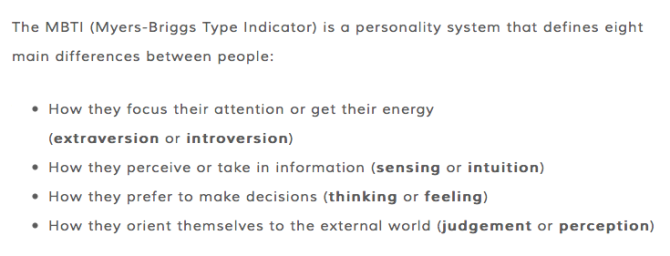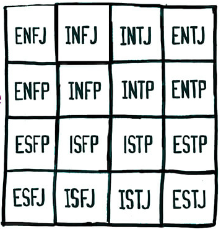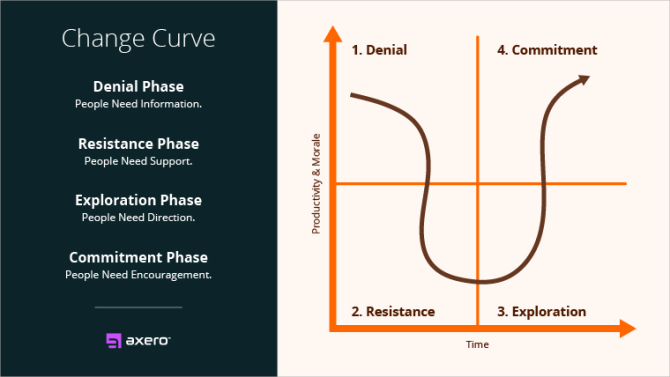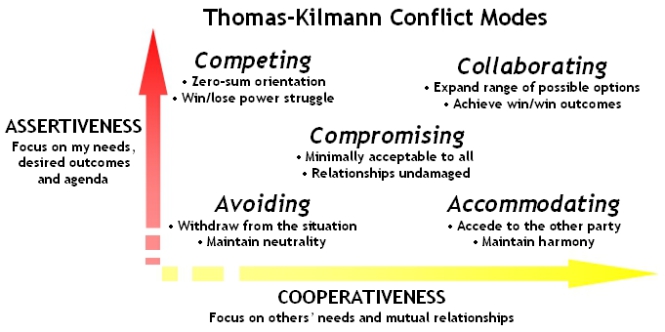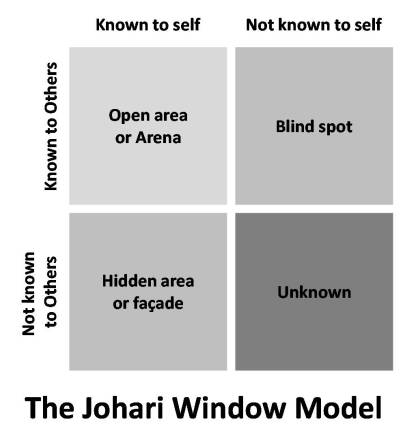
Adobe Acrobat document [3.6 MB]
Blueprint from the book Quiet by Susan Cain
Love is essential; gregariousness is optional. Cherish your nearest and dearest. Work with colleagues you like and respect. Scan new acquaintances for those who might fall into the former categories or whose company you enjoy for its own sake. And don’t worry about socializing with everyone else. Relationships make everyone happier, introverts included, but think quality over quantity.
The secret to life is to put yourself in the right lighting. For some it’s a Broadway spotlight; for others, a lamplit desk. Use your natural powers – of persistence, concentration, insight, and sensitivity – to do work you love and work that matters. Solve problems, make art, think deeply.
Figure out what you are meant to contribute to the world and make sure you contribute it. If this requires public speaking or networking or other activities that make you uncomfortable, do them anyway. But accept that they’re difficult, get the training you need to make them easier, and reward yourself when you’re done.
Quit your job as a TV anchor and get a degree in library science. But if TV anchoring is what you love, then create an extroverted persona to get yourself through the day. Here’s a rule of thumb for networking events: one new honest-to-goodness relationship is worth ten fistfuls of business cards. Rush home afterward and kick back on your sofa. Carve out restorative niches.
Respect your loved ones’ need for socializing and your own for solitude (and vice versa if you’re an extrovert).
Spend your free time the way you like, not the way you think you’re supposed to. Stay home on New Year’s Eve if that’s what makes you happy. Skip the committee meeting. Cross the street to avoid making aimless chitchat with random acquaintances. Read. Cook. Run. Write a story. Make a deal with yourself that you’ll attend a set number of social events in exchange for not feeling guilty when you beg off.
If your children are quiet, help them make peace with new situations and new people, but otherwise let them be themselves. Delight in the originality of their minds. Take pride in the strength of their consciences and the loyalty of their friendships. Don’t expect them to follow the gang. Encourage them to follow their passions instead. Throw confetti when they claim the fruits of those passions, whether it’s on the drummer’s throne, on the softball field, or on the page.
If you’re a teacher, enjoy your gregarious and participatory students. But don’t forget to cultivate the shy, the gentle, the autonomous, the ones with single-minded enthusiasms for chemistry sets or parrot taxonomy or nineteenth-century art. They are the artists, engineers, and thinkers of tomorrow.
If you’re a manager, remember tat one third to one half of your workforce is probably introverted, whether they appear that way or not. Think twice about how you design your organization’s office space. Don’t expect introverts to get jazzed up about open office plans, or for that matter, lunchtime birthday parties or team-building retreats. Make the most of introverts’ strengths – these are the people who can help you think deeply, strategize, solve complex problems, and spot canaries in your coal mine.
Also, remember the dangers of the New Groupthink. If it’s creativity you’re after, ask your employees to solve problems alone before sharing their ideas. If you want the wisdom of the crowd, gather it electronically, or in writing, and make sure people can’t see each other’s ideas until everyone’s had a chance to contribute. Face-to-face contact is important because it builds trust, but group dynamics contain unavoidable impediments to creative thinking. Arrange for people to interact one-on-one and in small, casual groups. Don’t mistake assertiveness or eloquence for good ideas. If you have a proactive workforce (and I hope you do), remember that they may perform better under an introverted leader than under an extroverted or charismatic one.
Whoever you are, bear in mind that appearance is not reality. Some people act like extroverts, but the effort costs them in energy, authenticity, and even physical health. Others seem aloof or self-contained, but their inner landscapes are rich and full of drama. So the next time you see a person with a composed face and a soft voice, remember that inside her mind she might be solving an equation, composing a sonnet, designing a hat. She might, that is, be deploying the powers of quiet.
We know from myths and fairy tales that there are many different kinds of powers in this world. One child is given a light saber, another a wizard’s education. The trick is not to amass all the different kinds of available power, but to use well the kind you’ve been granted. Introverts are offered keys to private gardens full of riches. To possess such a key is to tumble like Alice down her rabbit hole. She didn’t choose to go to Wonderland - but she made of it an adventure that was fresh and fantastic and very much her own.
Lewis Carroll was an introvert, too, by the way. Without him, there would be no Alice in Wonderland. And by now, this shouldn’t surprise us.
Adobe Acrobat document [775.2 KB]
This free personality test is based on Carl Jung's and Isabel Briggs Myers' typological approach to personality. Discover your personality type.
Microsoft Word document [99.1 KB]
Personality Type Dichotomies
|
Extraversion |
Focus of energy |
Introversion |
|
Sensing |
Information gathering (perceiving) |
Intuition |
|
Thinking |
Decision making |
Feeling |
|
Judging |
Lives in the outer world |
Perceiving |
Managing change
4 consistent findings in dealing with people going through change
- Every change causes losses
- As long as it breaks the old pattern, it will cause someone to lose something
- The sense of loss is present even when the change is obviously for the better
- Planned change is just as disruptive as unplanned change
6 losses people experience with change
- Loss of attachments: especially disruptive to those who identify with the relationships around them
- Loss of turf: thus refers to one’s space, territory, and/or areas of responsibility
- Loss of structure: this may be physical, interpersonal, functional, and/or procedural
- Loss of future: Is most disturbing when it’s perceived that dreams may not be realized
- Loss of meaning: if people do not understand or even know about the forces driving change, they have no sense of why things are happening
- Loss of control: most people like to be in control which is typically lost, if it ever really existed, when change occurs
Dealing with loss… thoughts for consideration
People who are experiencing losses are frequently experiencing pain from those losses. The first step is to acknowledge that the change is creating a sense of loss.
Allow people to speak about the impact of the change without faulting or blaming them. There is great value letting people express what they are thinking and feeling, i.e. getting it “off one’s chest”
Establishing opportunities for people to “grieve” can be very helpful. Effectively leading people through change requires finding ways to let people express their grief. The process of grieving is a natural process that allows people to work through their feelings of loss and to move forward to the next stage.
Change dynamics
- People will feel awkward, ill at ease, and self-conscious
- People will think about what they have to give up
- People will feel alone even if everyone else is going through the change
- People can handle only so much change
- People are at different levels of readiness for change
- People will be concerned that they don’t have enough resources
- If you take the pressure off, people will revert back to old behavior
B – bitching
M – moaning
W – whining
Moving though change: Stages, emotions, and behaviors
Stages of change
|
DENIAL No way |
COMMIT/ACCEPT Yes |
|
RESISTANCE Yes, but |
EXPLORE Maybe |
People often respond to change in 4 stages:
- Initially people tend to be in DENIAL – they are either unaware of the change, or believe it won’t happen here – it’s a way of protecting our self from becoming overwhelmed
- Once people become aware that the change will occur, they move into RESISTANCE – people will often be upset and negative as there’s a natural desire to maintain the status quo, no matter how good or bad
- Next, people begin to EXPLORE options, learn more about the change and the potential for what’s in it for them
- Individuals may then move to COMMITMENT – the cycle will begin again when a new change is introduced
Overcoming: DENIAL
- Provide information
- Clarify expectations
- Reinforce reality
- Provide time for thought, venting
- Develop new communication channels
- Talk to people in person
- Create individual ownership of the change
- Clarify the relationship of the group to the whole organization and/or change
Moving through: RESISTANCE
- Listen, listen, listen (remember: understand ≠agree)
- Acknowledge feelings
- Question to clarify real concerns and respond to those
- Act as a lightning rod and actively surface the resistance
- Help people recognize what they cannot control and encourage a shift in focus
- Question to clarify assumptions
- Do not try to talk people out of their perceptions
- Communicate consistently and often
- Tell the truth
- Accept hostility (within reason) as part of the natural process
- Develop good-bye rituals
- Facilitate discussion
- Help employees differentiate among resistance based on: helplessness, loss, risk, or anger
- Help employees differentiate among resistance based on: misunderstanding, organizational inertia, appears unethical, inter-team antagonism, problems with change initiators
- Express your own feelings
Working in: EXPLORATION
- Major task: Goal Setting and Problem Solving
- Clarify and stay focused on priorities
- Provide needed training
- Set short-term goals
- Support task completion
- Brainstorm around vision and planning
- Express your own feelings
- Allow space/time to rest and consider
- Encourage willingness to search for action
- Channel, without controlling, energy and creativity
- Remain balanced while defining the new way
- Help people focus on the things they can control
Relishing in: COMMITMENT
- Major Task: Create new team
- Celebrate, reinforce those in this stage
- Set long-term goals
- Team build
- Create a shared vision
- Encourage risk taking
- Process learnings (rather than blame)
- Encourage openness to continuous change
10 Leadership Theories (in 5 minutes)
- The Great Man Theory
- The Trait Theory of Leadership
- The Skills Theory of Leadership
- The Style Theory of Leadership
- The Situational Leadership Theory
- The Contingency Theory
- Transactional Leadership
- Transformational Leadership
- Leader-Member Exchange Theory
- Servant Leadership
What is the responsibility is also a challenge
“The price of greatness is responsibility” – Winston Churchill
Difference between ruling and leading
EVOLUTION OF SKILLS
Non-supervisory
Expectations:
- Excellent technical or production skills
- Acceptable skills in dealing with fellow employees
- Minimal requirements for planning/looking ahead
First-line supervisor
Expectations:
- Less technical/production skills required
- Human relations skills are most important
- Planning skills increased significantly
Middle Manager
Expectations:
- Most technical/production skills are delegated to others
- Must communicate effectively up, down and across the organization
- Anticipating problems and evaluating options is critical
Top Management/Executive
Expectations:
- Technical/production skills needed least
- Must set climate for effective interpersonal relationships
- Planning for the future is the top priority
“He who thinks he leads but has no followers is only taking a walk” – Chinese Proverb
Leadership and Power
There are various theories of how power influences leadership
Theories agree on several items:
- Power is generally defined as the ability to influence others
- All members of an organization have power
- All types of power have appropriate/inappropriate times to use them
There are three general sources of leadership power:
- Personality – 50%
- Knowledge – 40%
- Position/Title – 10%
Power bases
Position power – legitimate, coercive, reward
Personal power – referent, expert, information
“Being in power is like being a lady. If you have to tell people you are, you aren’t.” – Margaret Thatcher
Roles and Characteristics
|
LEADERSHIP |
MANAGEMENT |
|
Leads people |
Manages things |
|
Future |
Now |
|
Vision, direction |
Methods, policies, procedures |
|
Eye on the horizon |
Eye on the bottom line |
|
Proactive |
Reactive |
|
Strategic |
Tactical |
|
Create |
Troubleshoot |
|
Bring together |
Take apart |
|
Relationships and people |
Programs and effects |
|
Systems |
Parts |
|
What’s right |
What’s wrong |
|
Intuitive |
Analytical |
|
Inspires trust |
Relies on control |
|
Does the right thing |
Does things right |
Managing and Valuing Diversity
Managing Diversity
- Having structures and policies in place to eliminate barriers that prevent people from reaching their potential
- Providing equal and/or appropriate opportunities related to job and career
- Supporting appropriate equal opportunity laws and guidance
- Ensuring that all employees abide by equal opportunity laws and guidelines
Valuing Diversity
- Treating people as individuals
- Recognizing people have differing needs, beliefs, and values and will require different kinds of help and support
- Seeing the benefits to the organization of diverse backgrounds, experience and values
- Changing awareness, appreciating differences, refraining from pre-judging, avoiding stereotyping
Both managing and valuing diversity are important for achieving an inclusive workplace that maximizes the talents of each person and ensures that all individuals are able to participate and contribute to their full potential.
Generational differences are one source of diversity.
Generational Differences Grid
|
|
Seniors or traditionalists Aka the greatest generation
1922-1945 5% workforce |
Baby boomers
1946-1964 37% workforce |
Generation X
1965-1980 33% workforce |
Generation Y or Millennials
1981-2000 25% workforce
|
|
Defining events |
World War II Great Depression New Deal Rise of labor unions Emergence of the silver screen |
Cold War Vietnam War Cuban Missile Crisis Civil Rights Assassinations Woodstock Space Travel Television |
Women’s Lib Movement Berlin Wall Watergate Persian Gulf War Challenger Disaster MTV First PCs HIV-AIDS Single Parenthood Divorce
|
School Shootings OK City Bombing Multiculturalism Computers and games Digital Age (internet, wireless, IM, cell phones) |
|
Core values |
Dedication Sacrifice Hard work Law and order Conformity Respect for authority Patience Delayed reward Duty before pleasure Adherence to rules Honor
|
Optimism Team orientation Personal gratification Health and fitness Personal growth Hard work Involvement
|
Diversity Global thinking Balance Techno-literacy Fun Informality Self-reliance Pragmatism
|
Optimism Civic duty Confidence Achievement Sociability Morality Street smarts Diversity
|
|
Work ethic |
Dedicated |
Driven |
Balanced |
Ambitious |
|
Work style |
By the book How is as important as what gets done
|
Get it done Whatever it takes (including nights and weekends)
|
Take fastest route to results Protocol is secondary |
Work to deadlines and goals Not necessarily to schedules |
|
View of authority |
Respectful Especially of command and control Rarely question authority
|
Sometimes a love/hate relationship Respect for power and accomplishment |
Unimpressed egalitarian Rules are flexible Collaboration is important
|
Relaxed and polite Value autonomy and freedom Not inclined to pursue leadership But some ambition
|
|
Leadership by |
Hierarchy |
Consensus |
Competence |
Pulling together
|
|
Communication |
Formal yet personal Through proper channels
|
Somewhat formal through structured network Mix of electronic and face-to-face
|
Casual Direct and electronic Sometime skeptical |
Fast Casual Direct High-tech Eager to please |
|
Recognition/ Reward |
Personal acknowledgement and satisfaction for work done well
|
Public acknowledgement and career advancement |
A balance of fair compensation and ample time off |
Individual and public praise (exposure) Opportunities for broadening skills
|
|
Work and family |
Work and family should be kept separate
|
Work comes first |
Value a work/life balance |
Value blending personal life into work |
|
Relationships |
Personal sacrifice |
Personal gratification
|
Reluctance to commit |
Inclusive |
|
Loyalty to the |
Organization |
Meaning of and importance of
|
To individual career goals |
To the people involved with the project
|
|
Technology |
Challenging and complex If it ain’t broke, don’t fix it
|
Necessary for progress and achievement |
Practical tools for getting things done |
What else is there? |
Strategies for working across the generations
Initiate conversations with your team about the generations to help clear up any misconceptions and get any issues or concerns out in the open.
- Do not assume others share your perspective or values
- Do not make sweeping generalizations or assumptions about any one generation or tolerate others doing so
Get to know your coworkers as individuals. Learn about each person’s needs and preferences. For example:
- What energizes and excites this person?
- What are this person’s strengths and natural talents?
- What contributions has this person made to the department/organization?
- How does this person prefer to interact with others?
- What does this person do that I and/or others appreciate and value?
- What opportunities for learning, growth, and development have others or I provided (or might be provided) to this person?
- What are some meaningful ways to recognize this person’s contributions?
Be flexible with your own style and approaches in working with others.
Build on your team’s strengths.
Recognize and take advantage of everyone’s unique capabilities and characteristics.
Make it a point to seek out different perspectives.
Intentionally choose people with varied backgrounds and perspectives to work on projects and issues together.
CONSTRUCTIVE CONFLICT MANAGEMENT TOOLS
“Every conflict we face in life is rich with positive and negative potential… The choice is not up to our opponents, but to us, and our willingness to face and work through them.” – Kenneth Cloke
When conflict is managed constructively, issues are resolved satisfactorily to the involved parties, resources are used efficiently, and relationships are enhanced through respectful, professional, and responsible interactions.
Every human interaction either:
- enhances
- maintains
- erodes
the relationship
- Remain open and non-defensive.
When resolving conflict, it is estimated that people spend 90% of their time trying to get around the defensiveness rather than dealing with the true issue.
Avoid becoming defensive or getting the other person defensive. Your defensiveness inadvertently encourages the other person to attack more and sets up a vicious cycle.
The following guidelines will help deter defensive reactions and encourage understanding.
- Describe using facts vs. evaluate expressing opinions.
Describe situations using specific, observable, behavioral facts. When behaviors are described accurately, they are easier for people to comprehend and digest, especially if they are objective. People can talk more easily when discussing what actually occurred rather than someone’s evaluation, perception or opinion. These latter items are based on our filters, values, experiences, etc. When evaluated, we feel a natural human tendency to defend ourselves, especially if we feel the allegation is untrue. Unfortunately, opinions often creep into our speech and writing. Learning to separate facts from opinions can help build a deeper understanding of the problem and prevent overly defensive reactions.
- Legitimize the other person’s point of view.
Legitimizing the other person’s point of view is not an admission of wrongdoing on your part. It just says, “If the situation happened to me the way you currently perceive it, I’d probably feel the same way you do.”
- Focus on the future.
When the past is gone, people get defensive when we bring it up and keep drumming on it. You can’t change the past, but you can change the future.
- Assume positive intent.
Assuming positive intent does not mean being blindly optimistic. It is a consciously chosen attitude that offers positive possibilities so we can clearly focus on issues. This allows us to deal in the realm of facts and specific behaviors versus accusations and assertions. It allows us to look with fresh eyes the “story” we created about the other party.
- Be aware of differing approaches.
- Direct or indirect communication.
Two basic communication styles are “direct” and “indirect”
Direct communicators clearly indicate exactly what they want. Truthfulness and efficiency in communication are highly valued, more than personal or political sensitivities. Direct communicators believe problems are solved more productively with open, frank discussions.
Indirect communicators make statements they believe imply an action they want another person to take. Direct communication, especially involving negative information is seen as impolite and crude. Indirect communicators believe problems are solved more productively if they are handled with tact and discretion.
There is no problem when people communicate using the same style. Conflict occurs when the people communicate using different styles. Unless one person flexes to the communication style of the other person, it’s likely the parties will either miss or misinterpret what is said.
- Is it a content, pattern, or relationship issue?
Content is the essence of the issue, the bad behavior exhibited, or the impact and consequences of the action or behavior.
Pattern is repeated occurrences of the action or bad behavior, as well as the impact and consequences.
Relationship issues can arise when content and pattern issues continue to exist. When others continue to disappointment and disrespect, this can lead to distrust, dissatisfaction and a whole host of negative consequences.
- Is it a skill (ability – can’t do) or motivation (will – won’t do) issue?
Determining the cause will help with strategies to resolve the situation in the future.
- Does the person have the skill and ability to do what is expected?
- Is the person motivated to do what is expected?
Know it can be a combination of the two.
- Use effective communication skills.
- Speak responsibly.
You can say anything; its how you say it. When discussing topics that are sensitive or liable to cause a defensive reaction, as in a conflict, how you say something is as important as what you say. Express your thoughts in an honest, professional, respectful, and appropriate way. Consider what it is you want to say and convey your message in a way that others can hear it without being offended. It’s helpful to use “I” statements. Speak for yourself and not others. Don’t exaggerate and avoid using words like “never” and “always” as they are seldom entirely true.
- Use effective inquiry.
The more information we have, the greater the potential for discovering an option/solution that works for both parties. Asking open-ended questions is one of the most effective ways of gathering information and actively involve the other person. Open-ended questions encourage people to share information while closed-ended questions limit the amount of information received.
Effective inquiry is helpful in a conflict situation, as it is a process designed to facilitate the examination of ideas and opinion. The intent is to achieve a more complete understanding without motive to prove or disprove.
- Listen actively.
Listening closely to what the other person is saying will help you understand how the conflict situation looks from their perspective. The skills involved in active listening are:
- Focus on the speaker
- Be open (seek first to understand, then to be understood)
- Use attentive body language (including body posture, proximity, facial expressions, eye contact, gestures)
- Use appropriate verbal prompts and non-verbal prompts
- Respond respectfully after the other person has finished talking
- Paraphrase what you think was said
- Ask clarifying questions, when needed
- Summarize when appropriate
- Acknowledge the speaker’s feelings
- Prepare for the confrontation with safety in mind.
In order for people to fully engage, they must feel safe. Some ways to achieve this are:
- Share your good intentions with the other party
- Seek common ground
- Tentatively share your story
- Distill the issue into a succinct sentence that describes the situation in specific, observable, objective terms
- Describe the impact or unintended consequences of the current behavior
Adobe Acrobat document [1.1 MB]
Conflict Management Styles for Today's Workforce
"Instead of reacting to disputes in a confused, defensive, or angry manner, you can learn to manage conflict confidently and constructively." - Ken Sande
Conflict: A difference of opinion or purpose that frustrates someone's goals or desires.
Dispute: To argue about
Remember that "stuff" happens!
Disputes and conflict are a natural outcome of individuals working together.
So expect problems.... and accept the challenge of resolving them as an opportunity to eliminate obstacles to organizational effectiveness.
Positive Side of Conflict
"The hallmark of a well-managed organization is not the absence of problems, but whether or not problems are effectively resolved. - Steve Ventura
Despite the fact that many of us equate conflict with danger, stress, or destructive actions, when managed well, conflict has the potential to be constructive. In fact, without some conflict we would undoubtedly find we stagnate or at the very least, that we do not grow to our full potential.
Conflict can:
- improve relationships by provding greater understanding and appreciation for each other's position/interest
- bring important issues to the forefront, so they may be resolved before a crisis can occur
- result in new and creative solutions to problems
- change the way we think about a situation or a person
"One of the great ironies about conflict is that it is absolutely necessary for developing team cohesion in the workplace. Team cohesion then, reflects good communication and trust between team members. Avoidance of conflict represents a breakdown in the team communication process and lost opportunities. This is why an understanding of conflict management and resolution strategies is so important." - Pat Hein
5 Basic Methods for Resolving Conflict
|
METHOD |
APPROPRIATE TO USE WHEN |
INAPPROPRIATE TO USE WHEN |
|
Competing I win – you lose
A person uses whatever seems appropriate to win one’s position
This is an aggressive approach where others are seen as the enemy
|
- quick action is needed (safety or security) - unpopular events must be enforced for the greater good - authoritarian power must be used - both parties have agreed to the method
|
- the relationship is important - the parties considered the looser will cause considerable disruptions in the future |
|
Avoiding I lose – you lose
A person neglects his or her own concerns as well as those of others by not raising or addressing the conflict issue
|
- the issue is unimportant - timing is bad - others are able to resolve it - more information is needed - potential cost of confronting conflict outweighs benefit - issue is a symptom of a larger issue
|
- the issue will not go away - the issue is important |
|
Accommodating I lose – you win
A person seeks to satisfy the other person’s concerns at the expense of their own
When accomodating, some people may pretend that everything is okay, when it is not
|
- the issue is real important to the other person - you realize you are mistaken - other’s need to try something to learn - you need to build credit with the other party
|
- the issue is important to you |
|
Compromising Both win – both lose
A person seeks middle ground that provides a partial satisfaction for both parties
|
- you have 2 strong parties that will not yield you need fast solutions - a temporary solution is needed to a complex issue - competing or collaborating are not working
|
- a lose-win stance is undesirable and/or unacceptable |
|
Collaborating I win – you win
A person works with another to find a solution that fully satisfies both one's own concerns and those of the other |
- the issue and the relationship are both important - time is available - both parties are committed and trained in the process - you need to work through hard feelings that interfere with the relationship
|
- time, ability, skills and/or commitment are not there |
Adobe Acrobat document [212.1 KB]
Adobe Acrobat document [226.1 KB]
Microsoft Word document [130.5 KB]
Adobe Acrobat document [1.6 MB]
FEEDBACK TECHNIQUES TO USE TODAY
For giving, receiving, and soliciting
Feedback is what you saw and/or what you heard and the impact it had. It is a verbal or non-verbal process, which you let others know, or they let you know, of specific, observable behaviors and the impact they have.
THE JOHARI WINDOW
Adobe Acrobat document [185.4 KB]
What can you do with feedback?
3 things:
1. Use it - if you feel it applies to the situation
2. Reject it - if you feel it does nor apply at all
3. Store it - if you feel it does not apply now, but may at some future time
(Also, consider the source)
"It is good to see ourselves as others see us. Try as we may, we are never able to know ourselves fully...."
- Mahatma Gandhi
Microsoft Word document [360.5 KB]
“There are, then, two ways to confront or criticize another human being; with instinctive and spontaneous certainty that one is right, or with a belief that one is probably right arrived at through scrupulous self-doubting and self-examination. The first is the way of arrogance; it is the most common way of parents, spouses, teachers and people generally in their day-to-day affairs; it is usually unsuccessful, producing more resentment than growth and many other effects that were not intended. The second is the way of humility; it is not common, requiring as it does a genuine extension of oneself; it is more likely to be successful, and it is never, in my experience, destructive.” – M. Scott Peck in the Road Less Traveled
Common concerns about workplace feedback:
- Not enough feedback (no guidance) or too much feedback (micro0management)
- Too much negative feedback, not enough positive
- Misinformed feedback
- Vague, rushed, delayed
Implications of poor feedback:
- Employees become anxious and uncertain
- Work quality is diminished, mistakes recur
- Managers lose credibility with employees
- Employees miss out on extremely valuable learning opportunities
- Performance feedback loses meaning
High Impact Meetings
When to have and not have a meeting
|
DO have a meeting for… |
DO NOT have a meeting for… |
|
Information gathering and sharing |
You do not have a specific agenda |
|
Group discussion |
There is inadequate data or time |
|
Problem-solving and decision making |
Another form of communication would do |
|
Clarifying issues or goals |
People are not available |
|
Reconciling group conflict |
Issues should be discussed privately |
|
Training / teaching |
A decision has already been made |
Some facts about meetings
- Many meetings are either unnecessary or unproductive.
- Some are so routine that no one has asked if they are still needed.
- The person running it typically has never been trained on how to facilitate effective ones, so subsequently the meeting is not well conducted.
- There may be little or no time to prepare for meetings; therefore, they are not helpful to the attendees.
- Meetings can be very expensive. You can calculate the cost by multiplying the number of people in the room by the average hourly salary, by the number of hours.
- People have preconceived thoughts about meetings.
Meeting Preparation
- Determine if a meeting is really necessary.
- Arrange for a (if appropriate):
- Facilitator, to conduct the meeting
- Note taker, if the group needs written types notes
- Scribe, to publicly chart the participant responses
- Time keeper, to keep the meeting on schedule
- Prepare an agenda with the name of the group, date, time and location, and the topics for the meeting. Send it out in advance to attendees, with copies of any
background information and a contact person(s), including the phone number and email, to whom questions or comments should be directed.
- For each agenda topic, include a clear statement of the objectives in terms of the intended outcome for each agenda item (for discussion, decision making, information gathering/sharing, training, etc.).
- Limit the number of attendees to the appropriate number of people and the key people needed.
- Limit the number of items that can be covered for the time allotted.
- Organize / Prioritize the agenda in a logical sequence (urgent or high priority items first).
- Identify the person responsible for each item on the agenda.
- Identify the material participants should bring to the meeting, and have copies there.
- Establish start and end times for the meeting as well as each agenda topic.
- Select a location that minimizes distractions and interruptions.
- Prepare yourself for the meeting.
- Check out the room, equipment and temperature in advance to be sure everything is working.
- Arrive early for the meetings so you can set up the room in the configuration you want and so you can greet the attendees as they arrive.
Conducting the meeting
- Open the meeting. The opening prepares the group for the actual meeting. Be sure to begin on time. one objective is to establish a relaxed, warm, friendly atmosphere, stressing the importance of the group’s task and the importance of each individual’s contribution throughout the meeting. The opening helps give attendees a common understanding and purpose for being there.
- Review the agenda, outcomes and timing for the meeting.
- Have a facilitator, note taker, scribe, and a time keeper, if appropriate. Introduce and explain/clarify the roles of each person, and any guest, to the group.
- Create/verify operating guidelines or ground rules, if appropriate.
- Review previous minutes, notes and open items, if available/appropriate.
- Follow the agenda topics and keep the meeting focused and moving. Use a parking lot or holding pattern for any items that are raised yet are not on the agenda.
- Be aware of the distinctive stages of group development:
1. FORMING: Characterized by testing what behaviors are acceptable to the group. The group leader (or facilitator) is instrumental for providing guidance and direction on purpose, roles and goals to the group.
2. STORMING: Characterized by intra-team conflict where individuals vie for position to express their individuality and resist group formation. Cliques, factions, uncertainty and power struggles may exist. The leader (or facilitator) should focus on the goals of the group and address any relationship and emotional issues.
3. NORMING: Characterized by the development of team cohesion. Members accept the team, the norms, as well as the roles, goals, responsibilities, and idiosyncrasies of other members. Commitment and unity are strong and the leader (or facilitator) may delegate to others.
4. PERFORMING: Now that the team has established its norms, it becomes an entity capable of diagnosing, solving problems and making decisions. Disagreements occur but are now resolved within the team positively. Team members look after one another. This fourth stage is not always reached.
- Be aware of the group dynamics:
1. Participation
2. Influence
3. Group atmosphere
4. Memberships
- Summarize the meeting, and publically document all of the action items:
1. Who
2. Will do
3. What
4. By when
- Allow time for questions and answers.
- Establish time, date, and location of the next meeting, if applicable.
- Close the meeting. The closing of a meeting accomplishes several items. It provides a summary of the meeting, identifies any action items, sets the stage, date, time, and place, for the next meeting (if any) and acknowledges the group.
After the meeting
1. Evaluate the success of the meeting. What worked? What did not work or could be done differently?
2. Review and send out minutes, if applicable.
3. Gather and distribute any documents and materials discussed during the meeting that need to be distributed to all participants before the next meeting.
4. Follow up on any issues that were raised, but tabled.
5. Begin to prepare for the next meeting.
Interventions of disruptive behaviors
It is important for leaders to have a repertoire of interventions in order to maintain focus and to help the group accomplish the objectives of the meeting. There are levels of interventions, just as there are levels or varying degrees of disruptions. To be most effective, match the level of intervention to the level of disruption and keep these three criteria to keep in mind when determining how to intervene:
- Eliminate or minimize the behavior.
- Maintain the self-esteem of the person exhibiting the disruptive behavior.
- Do not further disrupt the group’s process with the intervention.
Generating ideas (Brainstorming)
When a group is trying to solve problems or develop ideas, one way to begin is by creating ideas. This allows a lot of information to be gathered, different perspectives to be explored, and numerous ideas generated. The intention with brainstorming is to build energy, reduce inhibition, and create the richest possible database of ideas.
General Rules:
1. Quantity, not quality, is wanted. The greater the number of ideas, the more the likelihood of useful ones. Repetition is okay, as it is a combination or modification of previous ideas.
2. Sometimes it is helpful to get people warmed up and thinking before asking them to brainstorm. Have everyone list ideas in private for a few minutes or let them know well in advance.
3. Identify how ideas will be presented: anonymously, publicly, randomly, or round robin.
4. Freewheeling, piggybacking, and hitchhiking are encouraged: the wilder the idea, the better, as it is easier to tame them down to practical ones later.
5. Have more than one recorder to capture everything said. Number or alphabetize each entry for easy identification later.
6. When the group hit a plateau or silent period, coach them to “Enjoy the Silence.” Often the best ideas come after a period of silence.
7. No evaluation or judgment can be made. This must be saved until a later time after all ideas have been presented and recorded. This is the most difficult rule. Most people have been taught to think of an idea and immediately evaluate it, to judge whether or not it is practical or workable and whether other people will accept it. Watch positive and negative comments. The negative ones not only slam the idea, but often the person offering it.
Clarification of ideas
After brainstorming, there can be a number of ideas generated. Review each idea offered in the order they were recorded. The primary purpose of the review at this stage is to achieve a common understanding. The facilitator starts with the first idea, reads it aloud, asks if clarification is needed then moves on to the next. This is repeated until all items generated have been clarified.
- The person who offered the idea should provide clarification. It is not a time for discussion, evaluation, or seeking agreement.
- Disagreement should be allowed to the extent that it facilitates further clarification / refining of ideas.
Combining ideas
There are 2 ways to simplify a group’s efforts at this point:
1. Combining ideas that are the same, but worded differently.
2. Grouping ideas that are similar in nature but different in meaning.
Determining whether to do one or both of these steps depends on the topic, the ideas generated, and the group’s preferences. If one person in the group disagrees with combining or grouping an item – leave them separate.
Narrowing ideas
Narrowing is a way to continue to reduce the number of options to be considered. It enables a group to sort through a long list of ideas to identify priorities. A first step in narrowing is to ensure that each item listed satisfies the stated outcome.
MULTI-VOTING: Involves each group member having an agreed-upon number of votes (e.g. 2-5 each) to indicate their preferences for available options. The use of multi-voting allows the individual to convey how strongly, or to what degree she or he wants to retain a given item.
POLLING: Polling is a simple method of gathering a quick group opinion about available options. It can be seen as a short cut to multi-voting as it is done only by a show of hands for each item. It also shows the degree to which the group is interested in a given option. In polling, an individual can vote for as many items as they want. Any items not receiving any votes are dropped from the list.
PRIORITIZING: Prioritizing is a method by which a group identifies and ranks a list of items from the most urgent or important to the least. One way to prioritize is by beginning with the multi-voting process. Then list the items in order by the number of votes received. Any item not receiving any votes is dropped from the list.
Decision making methods
There are several conventional means for reaching a decision.
AUTHORITY: is a strategy where the “leader” makes the decision. This method may be appropriate when time for the discussion is limited, in emergency or safety situations, when the group cannot make a decision, or when it is not empowered to do so.
COMPROMISE: is viewed as a WIN/LOSE or LOSE/LOSE strategy as each person gives up some of what they originally wanted, and each gets something of what they wanted.
CONSENSUS: occurs when a final decision is reached that is acceptable to everyone. Consensus is a WIN/WIN strategy. Each member has fully expressed him/herself, feels understood and has collaborated to come up with the solution that all members can live with and support. Consensus is achieved when every member can say, “I have had an opportunity to express my views fully, and they have been thoughtfully considered by the group. Even though this solution is not the one I believe is optimal, I do believe it will work and I will support it.” This method is appropriate when there is sufficient time for discussion and commitment form all group members is needed. Contrary to some opinions, consensus does not mean everyone is in perfect harmony. Not everyone has to totally agree or be perfectly satisfied with the outcome for it to be consensus.
DECISION GRID with CRITERIA: is used by groups when there is time and a great deal of consensus. Decision making criteria are generated and there is an option to establish weighted value for each criteria. This process tends to be based on which criteria and options each participant most values.
DELEGATE: is when the group assigns their decision making authority to someone else such as a subcommittee or external expert, i.e. external to group membership.
EXPERT DECISION: is a strategy where the group member with the most “expert” knowledge of the issue at hand makes the decision. This method is appropriate when most of the group members have limited or no knowledge of the issue discussed.
MAJORITY VOTING: is a WIN/LOSE strategy in which the majority wins. It is appropriate when time for discussion is limited or when the issue being discussed is or minor importance.
Contact Me
Sarah Nilsson, J.D., Ph.D., MAS
602 561 8665
You can also fill out my
Get Social with Me
Legal Disclaimer
The information on this website is for EDUCATIONAL purposes only and DOES NOT constitute legal advice.
While the author of this website is an attorney, she is not YOUR attorney, nor are you her client, until you enter into a written agreement with Nilsson Law, PLLC to provide legal services.
In no event shall Sarah Nilsson be liable for any special, indirect, or consequential damages relating to this material, for any use of this website, or for any other hyperlinked website.
Steward of
I endorse the following products
KENNON (sun shields)
